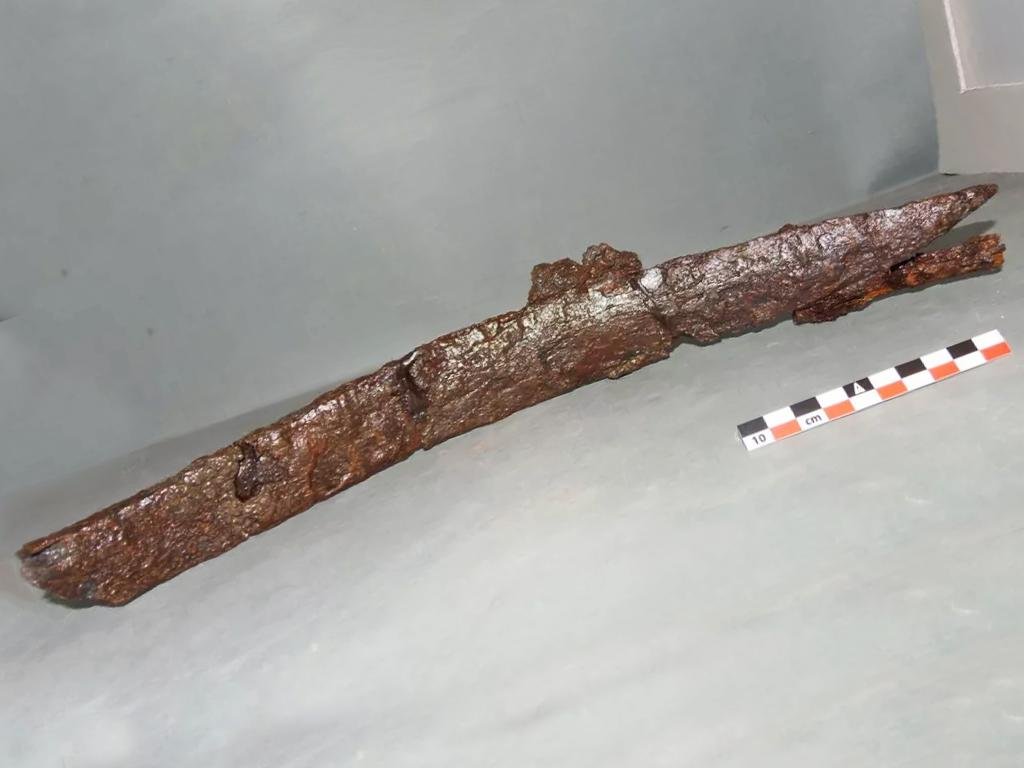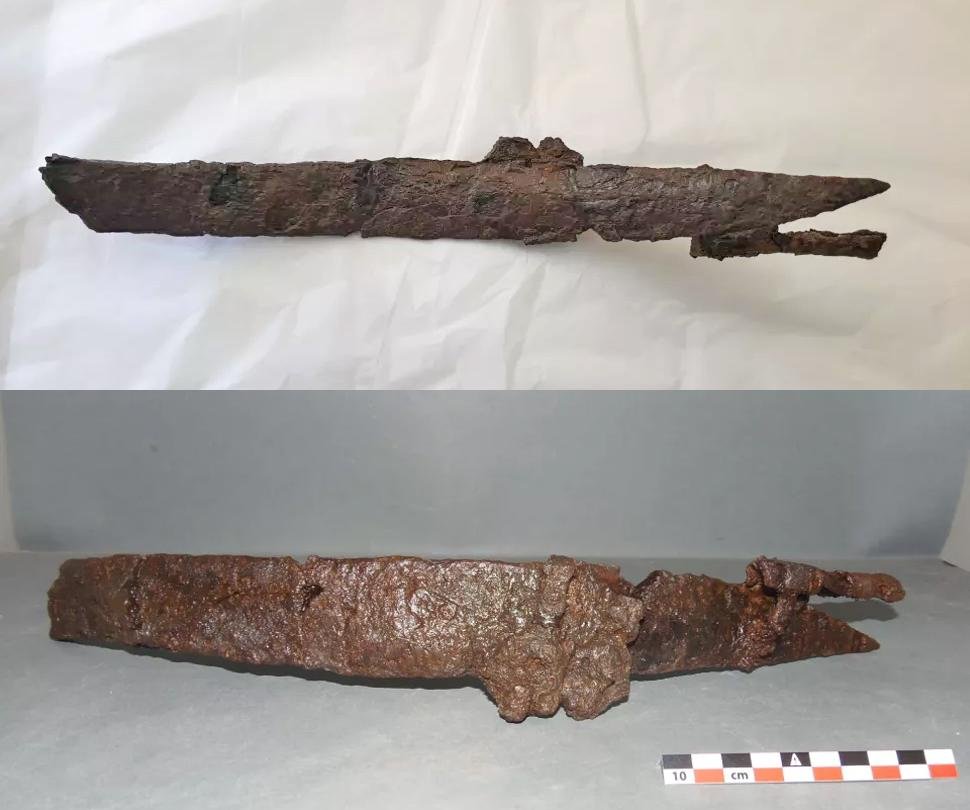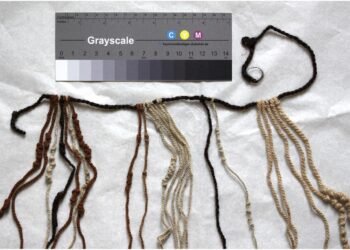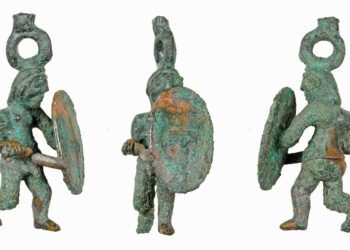Archaeologists have unearthed a rusty medieval saber at a fortified Christian monastery in northern Greece, according to a report by Live Science.

This single-edged sword, found amidst the ruins of the “Monastery of Agios Nikolaos of Chrysokamaros,” hints at a turbulent past, with potential connections to raiding Turkish pirates or the defenders of the monastery from centuries past.
The uniqueness of this discovery lies not only in its historical significance but also in its remarkable preservation, as iron weapons from this era typically succumb to rapid corrosion.
The saber, measuring approximately 18 inches in length, was first discovered between 2000 and 2001 during earlier excavations of the coastal Christian monastery, located about 40 miles southeast of Thessaloniki, Greece. Recent excavations have provided fresh insights into its origins and the historical context in which it was used.
The ruins of the monastery are on the middle of the three prominent peninsulas at Chalkidiki. Archaeologists think it was destroyed by fire during a raid in the 14th century. Image credit: E. Maniotis & T. DogasArchaeologist Errikos Maniotis, a doctoral candidate at Masaryk University in Brno, Czech Republic, who has been studying the sword, explains that the sword’s style presents a mystery: curved, single-edged sabers of this type were employed by both Turks and Byzantines during the 14th century.
Determining whether the sword belonged to Byzantine defenders or Turkish raiders is thus a challenging task. Maniotis has been collaborating with Theodoros Dogas, an archaeologist with the Ephorate of Antiquities of Chalcidice and Mount Athos, the regional archaeological agency, to excavate the monastery site.
Historical records indicate the presence of a monastery on this site, known as the “Monastery of Agios Nikolaos of Chrysokamaros,” dating back to at least the 11th century. However, it remains uncertain whether it operated independently or was affiliated with the powerful Mount Athos monastery on the easternmost of Chalkidiki’s peninsulas.
Notably, the excavations have uncovered a robust granite wall, measuring between 1.7 and 2 meters in thickness, that surrounded the monastery. Such well-constructed monastic structures often served as refuges during times of attack, such as pirate raids. These centers of ecclesiastical life often stored valuable items, including religious artifacts made of gold and essential food supplies like grain.
The evidence suggests that the tower within the monastery, now standing at 5 meters in height but likely taller in the past, suffered significant fire damage at some point. Weapons, including axes, arrowheads, and the single-edged sword, were discovered in the same archaeological layer as the fire damage. This leads researchers to conclude that the tower fell victim to a fierce blaze following a raid.

Archaeologists also unearthed a significant number of glazed pottery vessels, primarily dating to the 14th century, in the same stratum. Based on stylistic analysis, it is likely that the destruction of the monastery occurred in the latter half of the 14th century or possibly the early 15th century.
The historical backdrop for this discovery presents multiple possibilities, with clashes between Turks and Byzantines during the 14th century being frequent. Historically significant events in the region include Turkish pirate raids in 1344, the occupation of the area by the forces of Serbian king Stefan Dušan from 1345 to about 1371, and the Ottoman siege of Thessaloniki between 1383 and 1387, during which the Chalkidiki region faced recurrent food raids.
Despite the sword’s unique style and historical importance, determining its precise origins remains a challenge. Icons of Byzantine saints from the 13th century feature depictions of curved, single-edged swords, suggesting their use by Byzantine soldiers as early as the 6th century. However, these swords were also a common sight in Turkish lands, with historical records confirming their presence in Seljuk manuscripts from the 13th century.
The discovery of this rare medieval saber at the Greek monastery of Agios Nikolaos of Chrysokamaros raises questions about its origin and the historical events that unfolded in this coastal region during the 14th century. Errikos Maniotis and Theodoros Dogas plan to publish a research paper detailing their findings.























